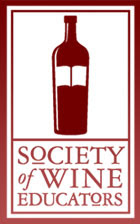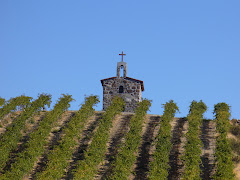 One of the toughest wine regions for me to understand fully is Austria. As a category in our stores, it’s quite small; there isn’t a big demand for them in this area. With that being said however, the wines from Austria are remarkably compatible with food, particularly the white wines made from Gruner Veltliner (Austria’s #1 grape) and Riesling (a much drier style than their German counterparts). Indeed, a great deal of Asian-fusion-themed restaurants the world over have embraced Gruner Veltliners for their clean, fresh flavors and bracing acidity – a perfect combination with the plethora of exotic spices in Thai, Indian, and Pan-Asian fare.
One of the toughest wine regions for me to understand fully is Austria. As a category in our stores, it’s quite small; there isn’t a big demand for them in this area. With that being said however, the wines from Austria are remarkably compatible with food, particularly the white wines made from Gruner Veltliner (Austria’s #1 grape) and Riesling (a much drier style than their German counterparts). Indeed, a great deal of Asian-fusion-themed restaurants the world over have embraced Gruner Veltliners for their clean, fresh flavors and bracing acidity – a perfect combination with the plethora of exotic spices in Thai, Indian, and Pan-Asian fare.In the countdown study mode, my review questions for the chapter on Austria are as follows:
1. What is Ausbruch? In Germany, the tiers of sweetness from driest to sweetest are Kabinett, Spatlese, Auslese, Beerenauslese, Eiswein, and Trockenbeerenauslese. Austria has a similar stratification of “levels of sweetness” with some additions, Ausbruch being one of them. Ausbruch falls between the BA (beerenauslese) and TBA (trockenbeerenauslese) categories, sort of taking the place of Eiswein, although there are Austrian Eisweins. Ausbruch wines are made from the must of late-harvest but NON-BOTRYTISED grapes to a must of grapes AFFECTED BY BOTRYTIS. The two are combined and fermented together, and the grapes must all be from the same vineyard.
2. What is the most widely planted grape variety in Austria? Gruner Veltliner, a grape variety almost entirely Austrian, with a flavor profile of arugala, pineapple and hints of white pepper.
3. What is the significance of the Heurige culture in Austria? “Heurige” is translated as “this year’s” and refers to both new wine and the vintner-owned taverns and wine bars that serve food alongside proprietary wine.
4. Describe the cause and effect of the Austrian wine scandal. In 1985 (the year I graduated high school - coincidence?), several winemakers were discovered to having adulterated their wines with diethylene glycol to give them more body. After exposure to the scandal in the international press, the exporting of Austrian wine was decimated. Having been infamous for some of the most lax regulations in the world, Austria used the scandal to get tough, initiating what has been regarded as the strictest regulations in the industry today. Because of this change in wine laws, Austria is now amongst the highest in quality wine production.
9. It is illegal to add Sussreserve to Pradikat wines in Austria, true or false? False. Sussreserve is translated as “sweet reserve” and refers to grape must with all natural sugars. It would be akin to chaptalization (the addition of sugar and water to grapes not reaching their optimum levels of sweetness), which is illegal in the making of Pradikatswein as well.
Cheers!











1 comment:
I loved your Austrian wine review questions as I am also a "student" of Austrian wines. I'm a wine blogger and social media marketer working on a contracted project with the Austrian Wine Marketing Board.
The good folks of the AWMB were nice enough to host a large group of writers, critics, restaurant owners, etc. at their annual wine summit this past June. During this trip I tasted hundreds of Austrian wines and visited several wineries. It's a whole new experience seeing the country in the flesh with its numerous vineyards, and provides a greater understanding of why their wines taste the way they do (Hiyo...Terroir!).
For a country of its size, there truly are a huge number of winemakers, classifications, laws, regions, grapes...the list goes on. It's a great deal of information to process, the best part of course being, tasting the wines themselves.
Should you ever need any information about Austrian wines...pictures, knowledge, etc. please feel free to contact me @ laurietadayon@comcast.net and/or via my blog. I actually have many posts up now about my trip.
So, again, really great post of yours here. It showcases the complexity of Austria's wines and viniculture nicely.
Cheers!
Post a Comment